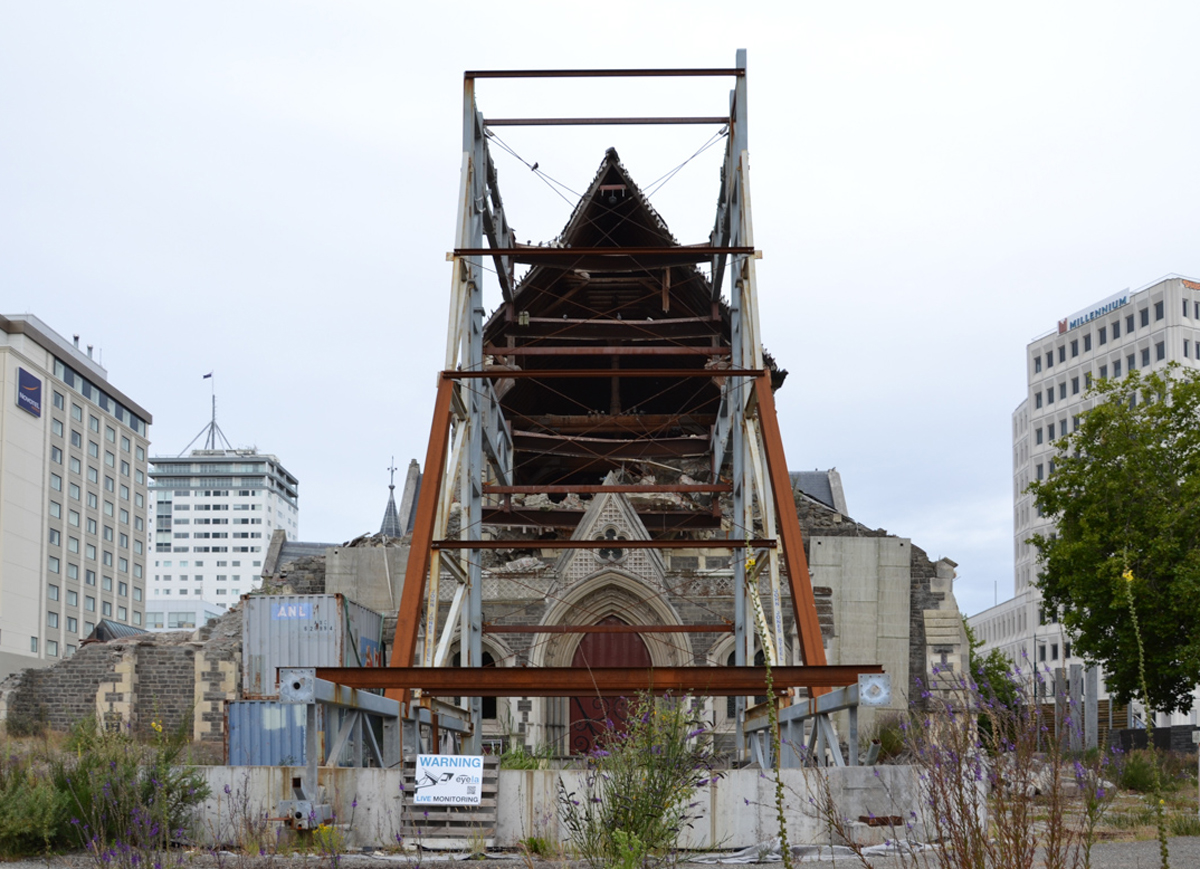Leggi questo post in Italiano
These are days of fear, expectation and concern in many cities of Italy because of the earthquake. I’m writing from the safe Milan but a thought goes to those who have no more faith in the solid ground. I can do very little but keep you company and tell stories about excellence and human intelligence.
Today I tell you about Christchurch, the largest city of the South Island in New Zealand, that we visited last Spring during our second ’round the world trip.
Christchurch is New Zealand’s third largest city with 367,800 inhabitants. Founded in 1850, it is the most English city all over the country, in fact, it was meant to be the British example to the New Zealand architecture.
In September 2010, a earthquake of magnitude 7.1 struck the city, causing material damage. The earth shook again in 2011 when a new earthquake of magnitude 6.3 was particularly destructive, the hypocenter was only 4 km deep, it caused 181 victims, thousands of evacuated persons and irreparable damage to buildings.
Visiting Christchurch after 5 years is still a shocking experience. The earthquake struck the center of the city. It looked like a post atomic disaster city with abandoned buildings.

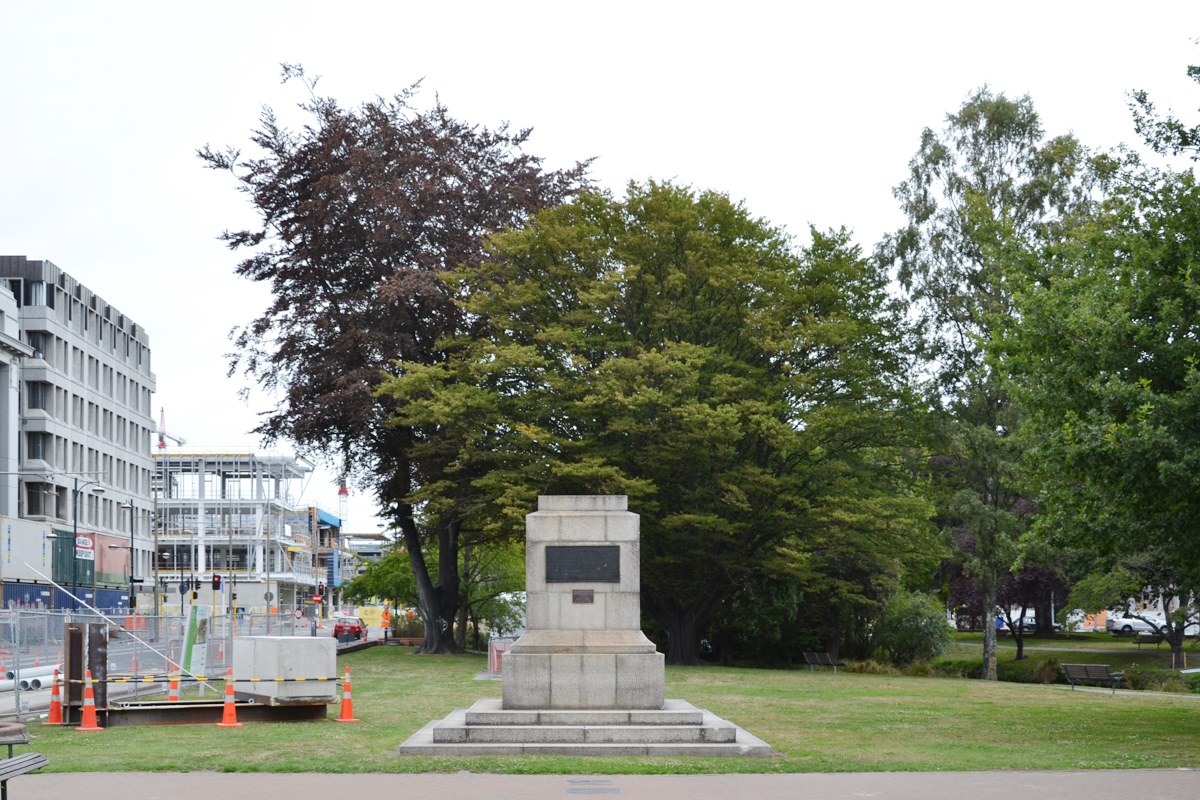
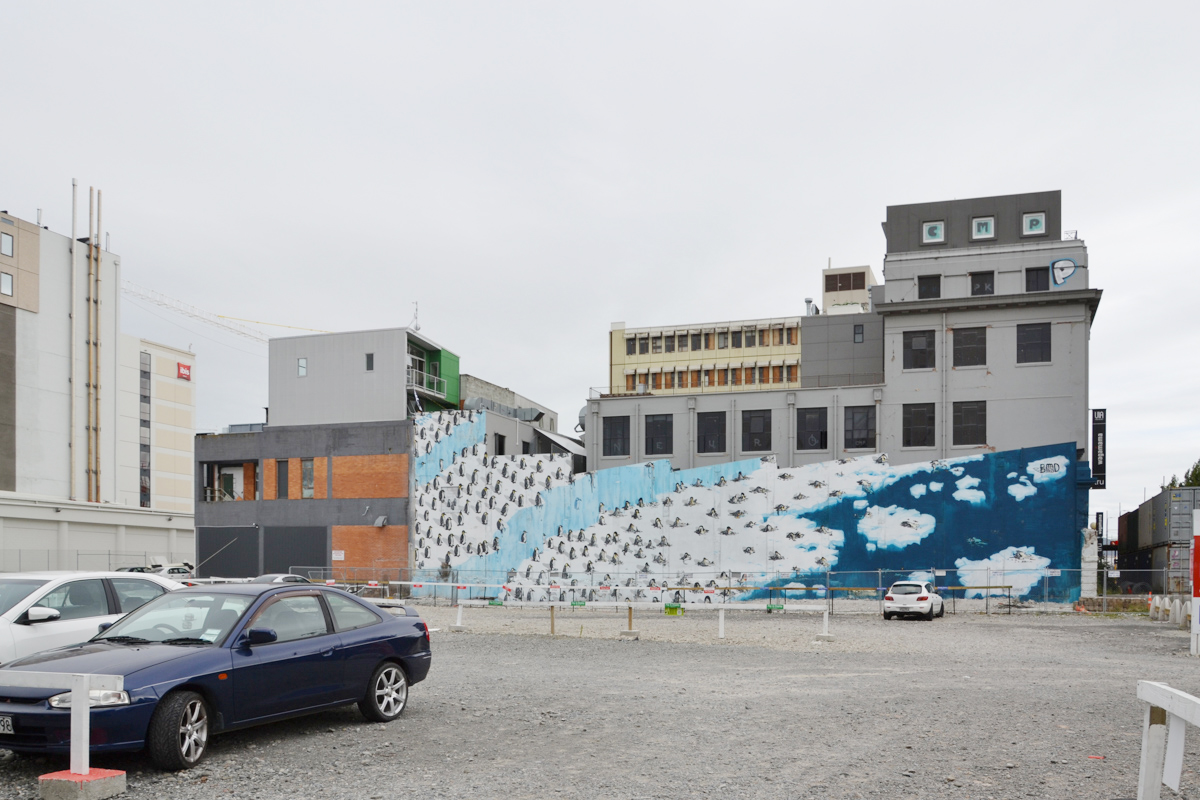
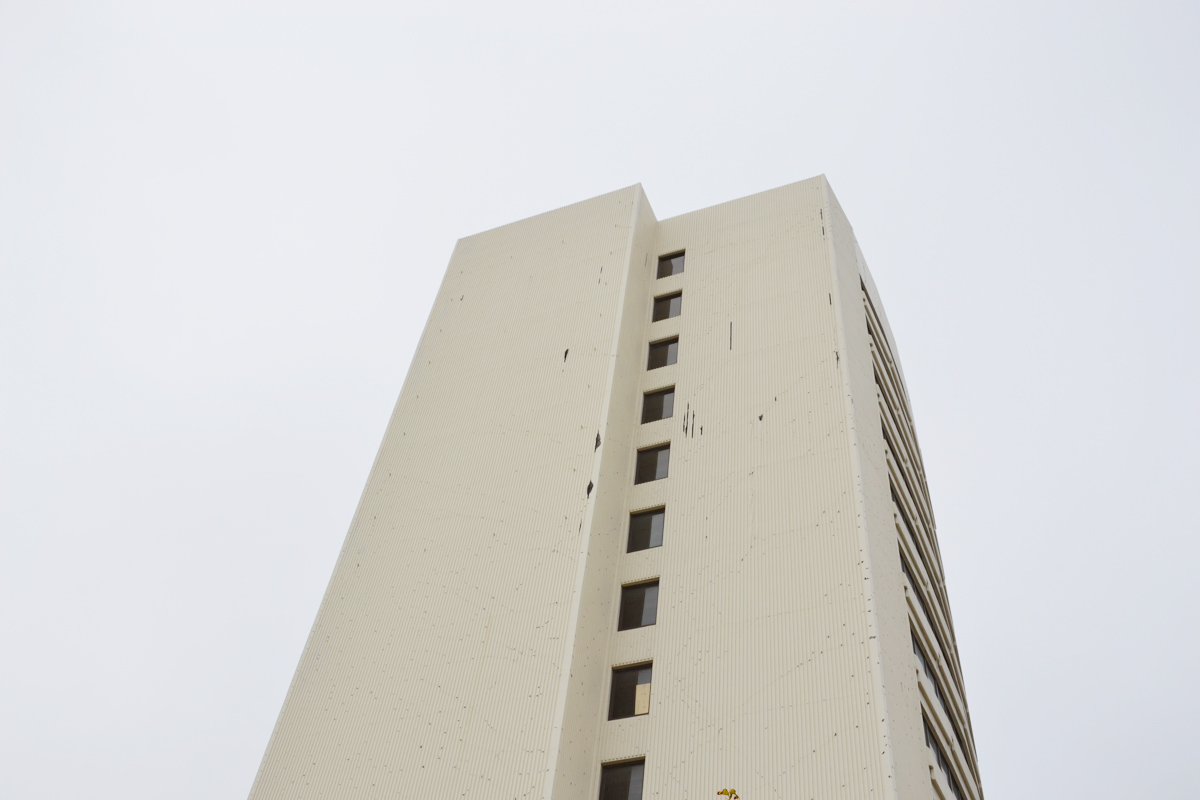

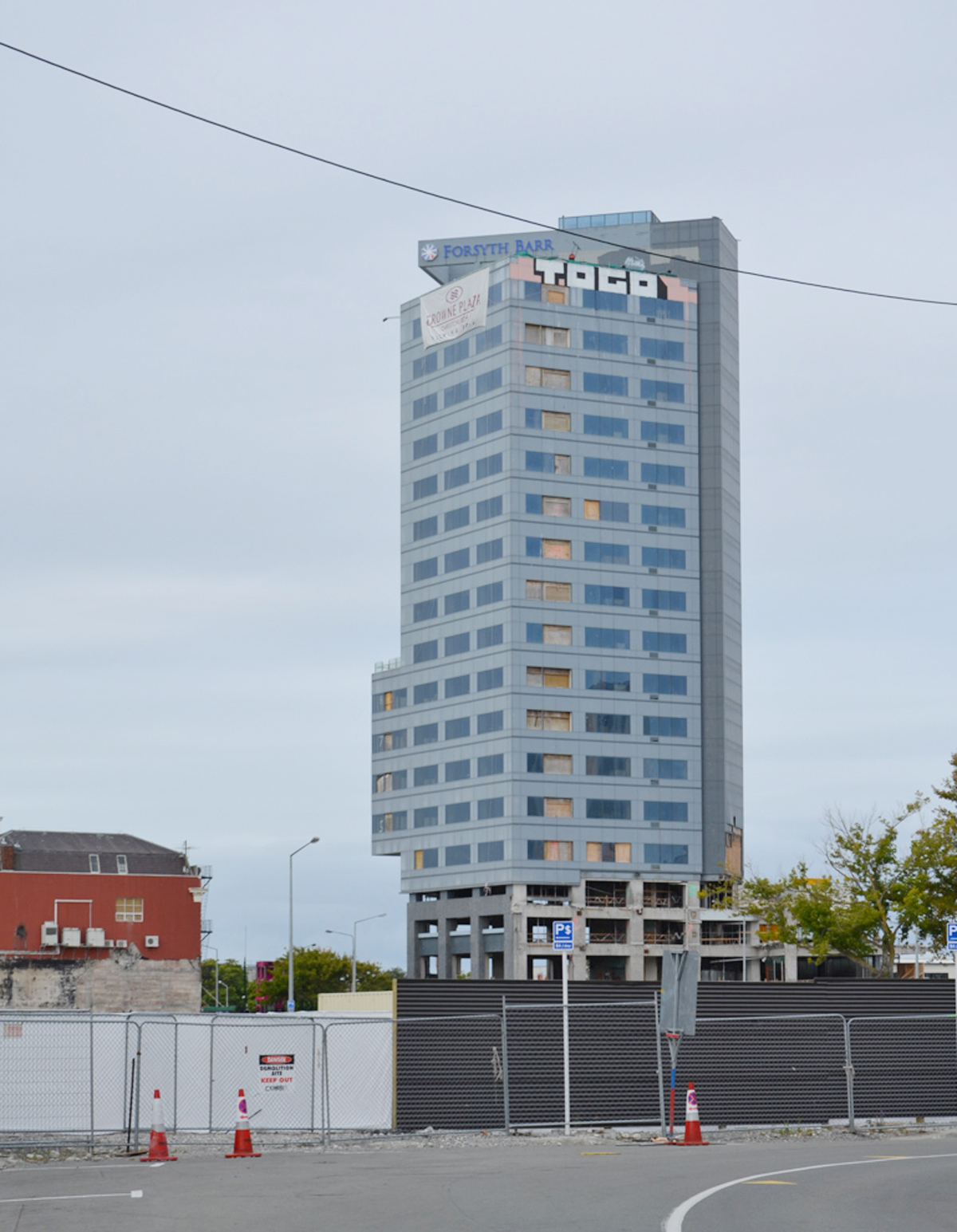
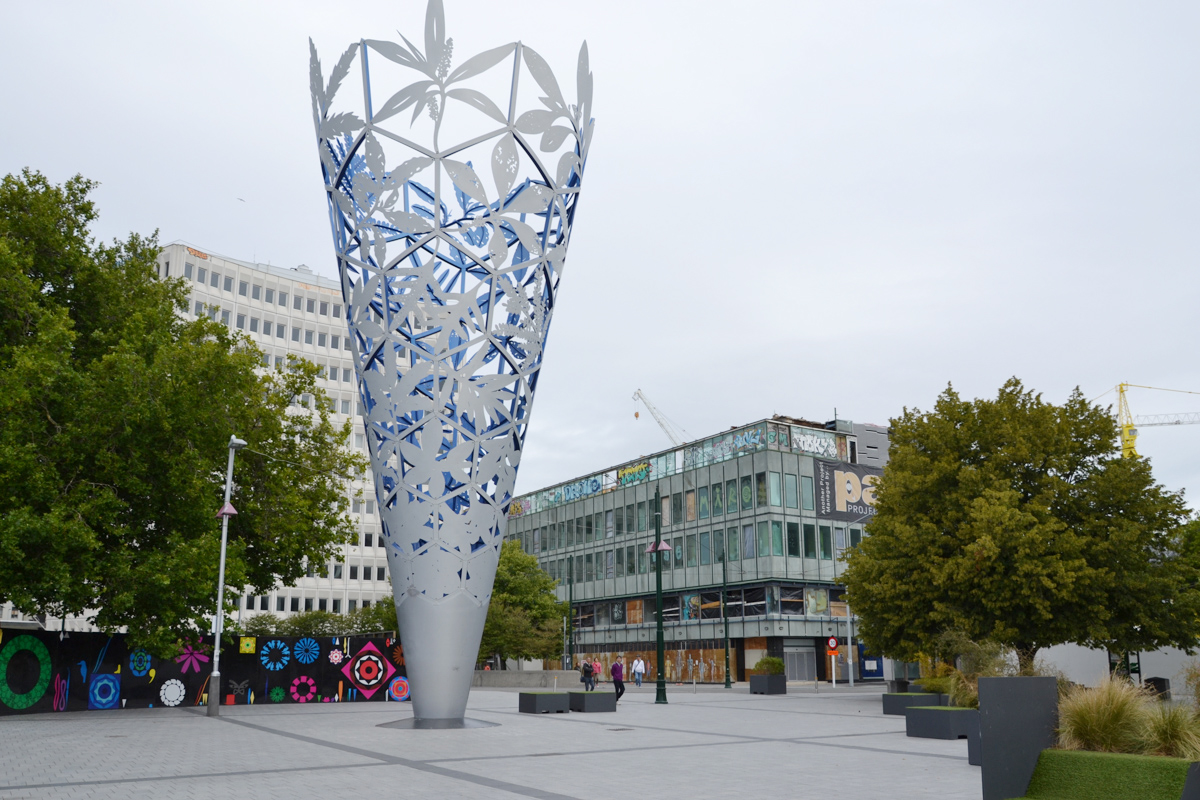
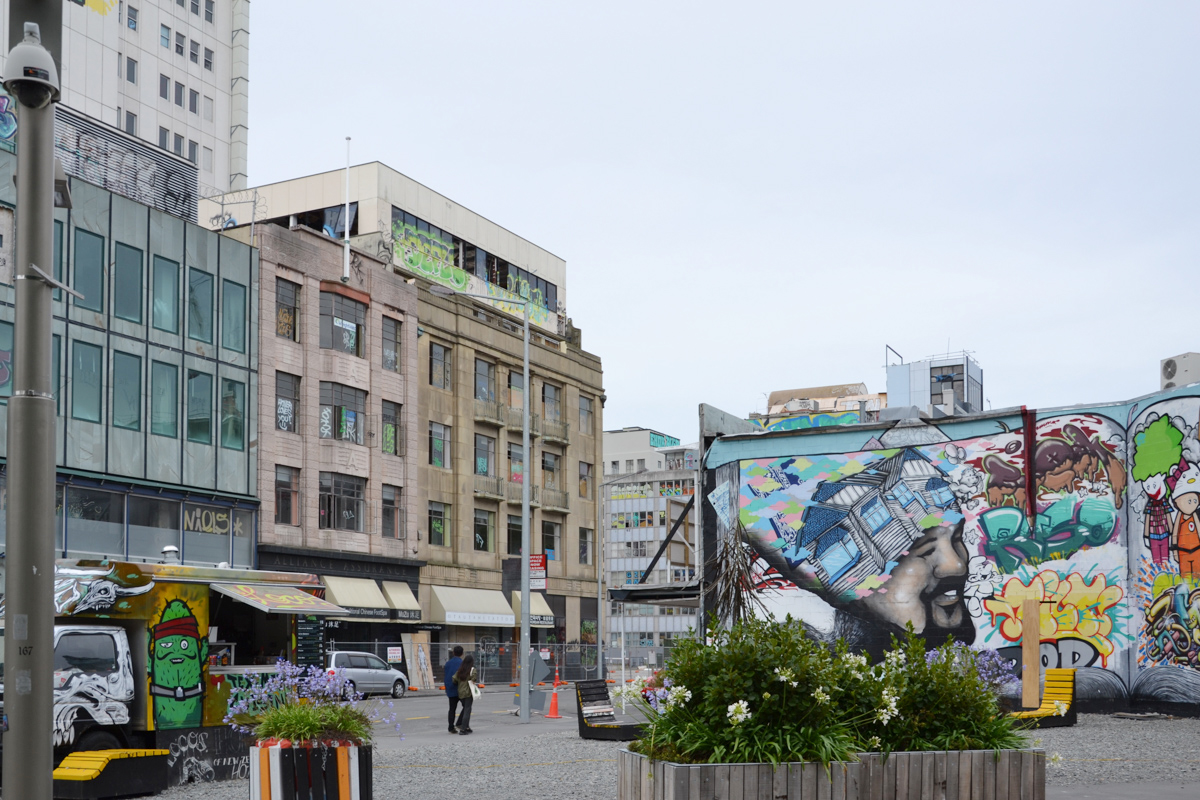
The earthquake struck the heart of the city, the Cathedral collapsed almost completely. From the Canterbury rural areas came the so-called “Farmy Army”, an army armed with food and groceries. 10,000 students formed the “Student Volunteer Army” and cleaned up the devastated neighborhoods. 80% of the buildings of the city center was called irretrievable and has been demolished or will be soon.
Empty blocks are quite a dismal picture but there are many projects for reconstruction, the city is rising again from its ruins. In fact Lonely Planet nominated Christchurch one of the top 10 cities of the world to travel to in 2013.
The center is usually the place where there are bars and restaurants. In Christchurch is not anymore like this, at least not for the moment. After the earthquake, the activities were moved outside the center in the places available: the houses. And so we go to dinner in converted houses to public places. Original and really beautiful! The center of the city has been decentralized. In the area affected by the earthquake has risen Re: Start Mall, a kind of shopping center with shops and bars in shipping containers.
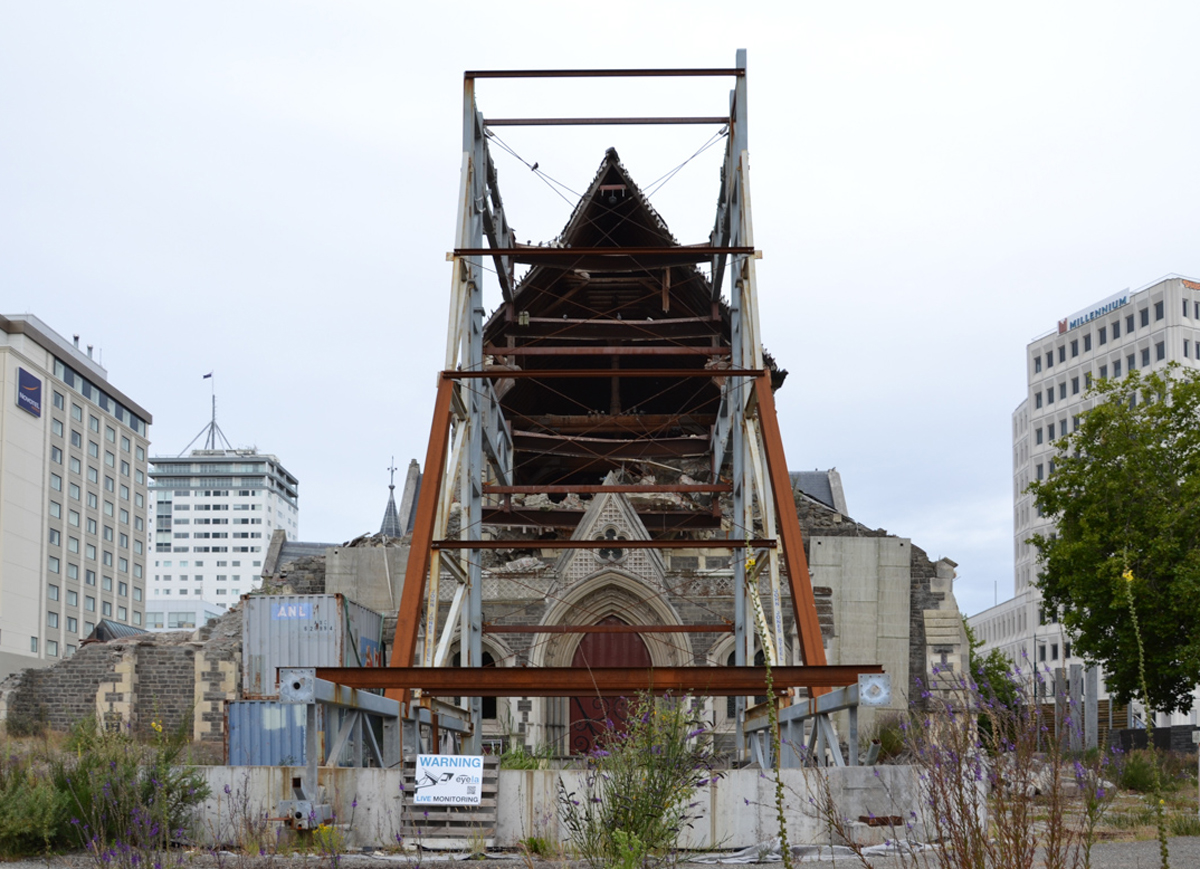
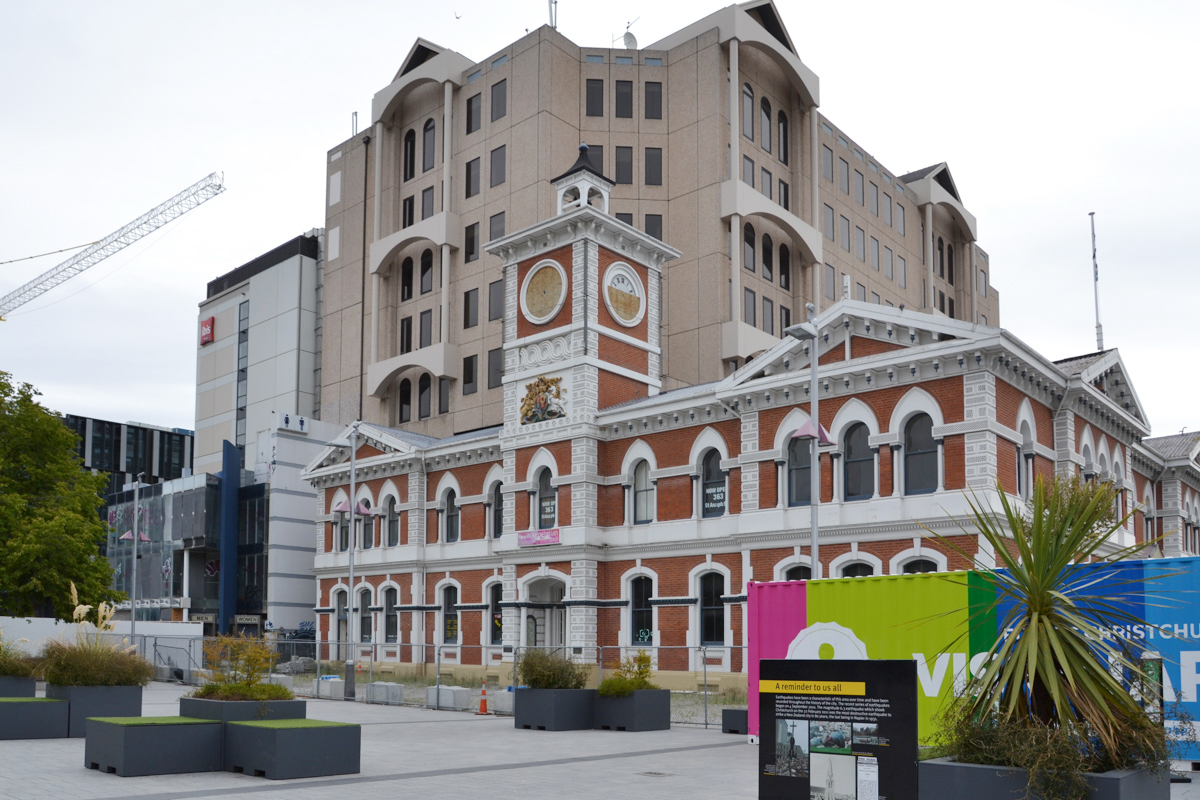
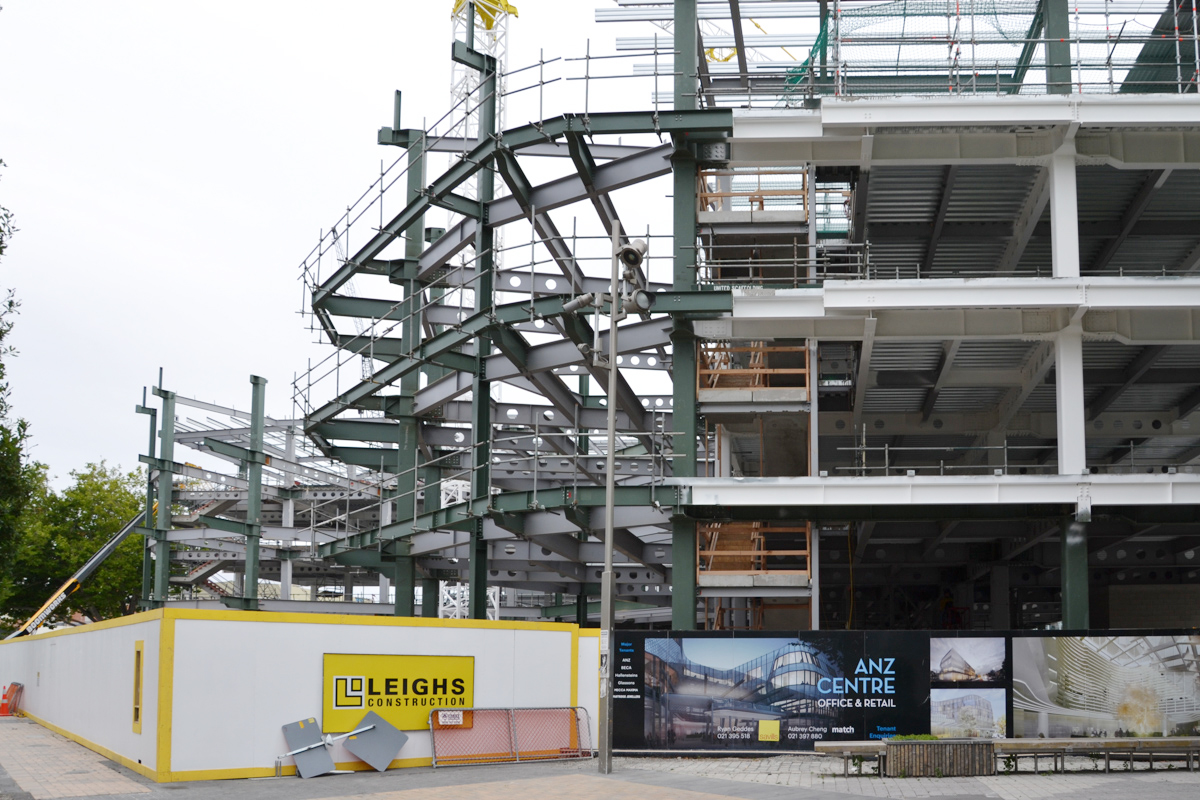
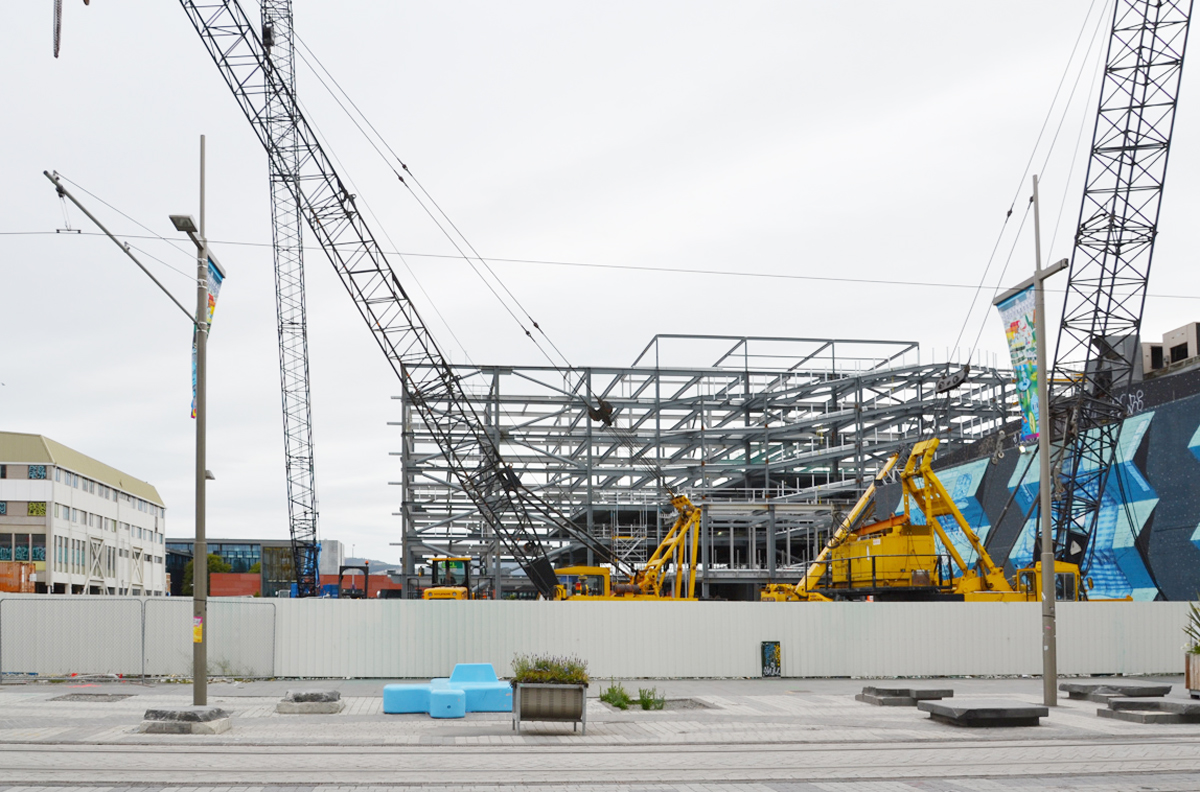

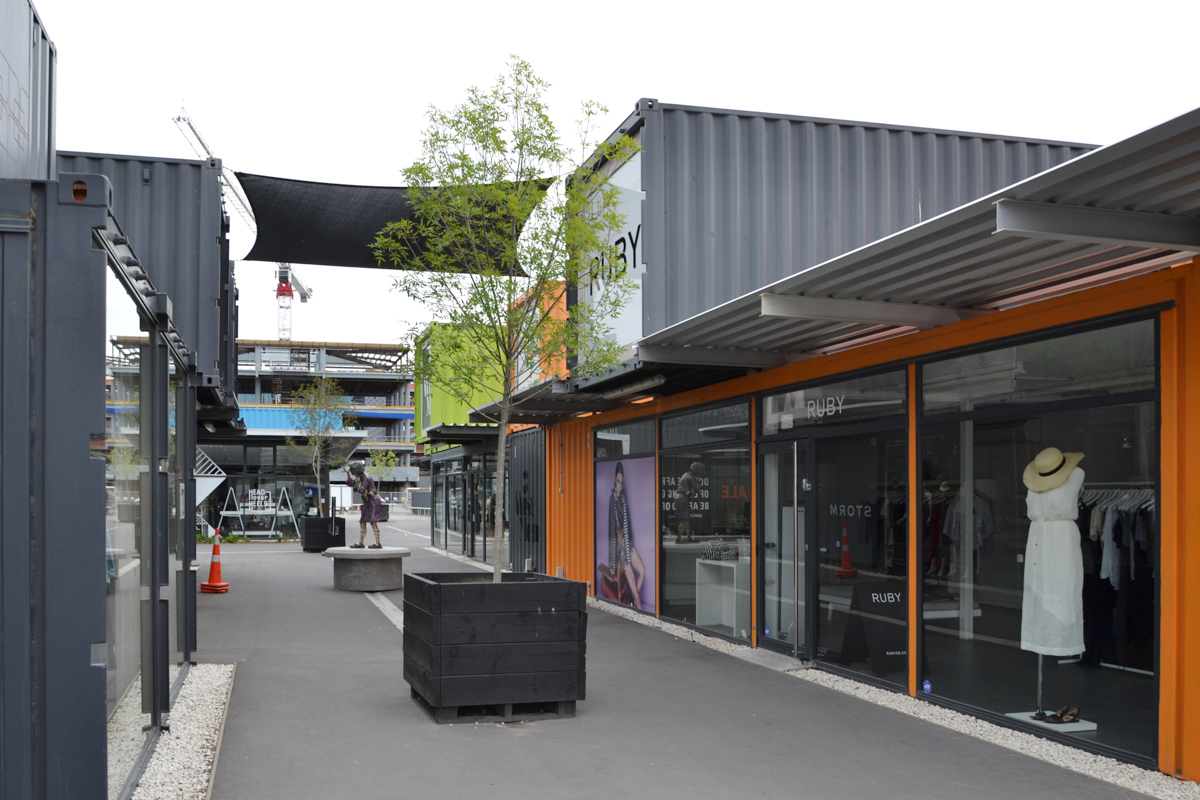
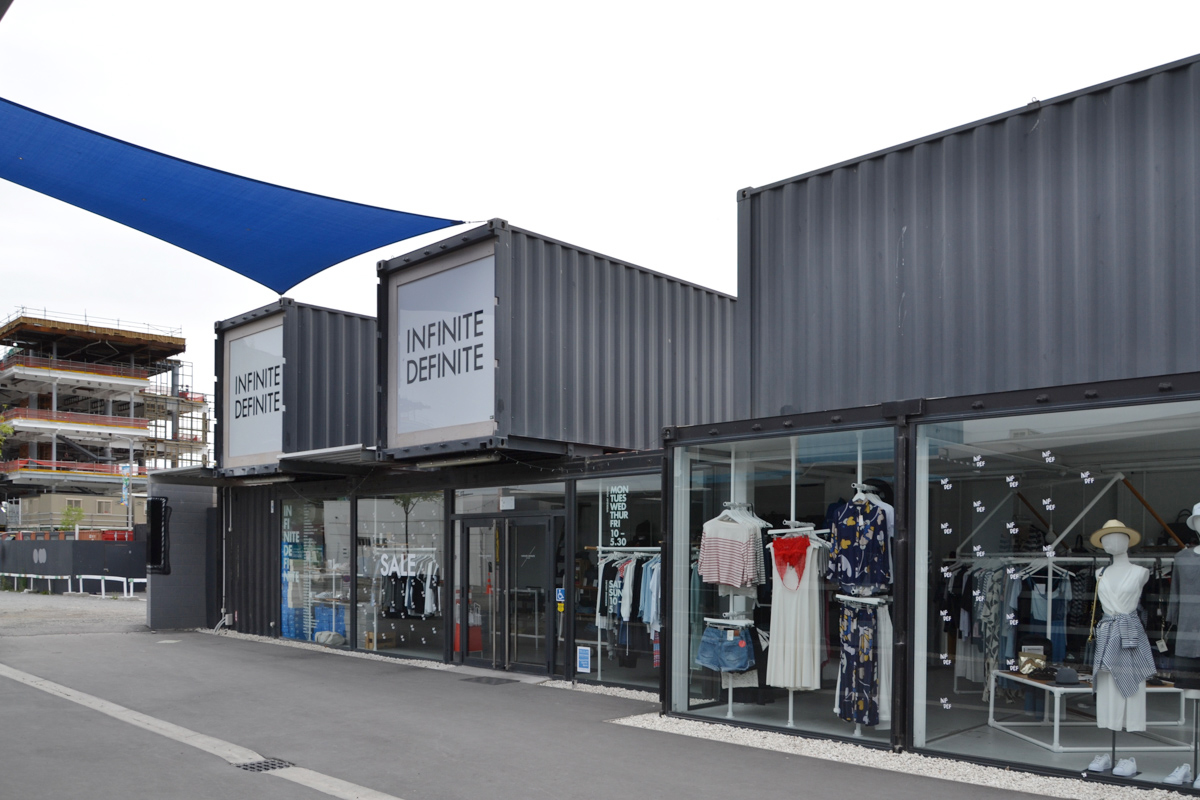
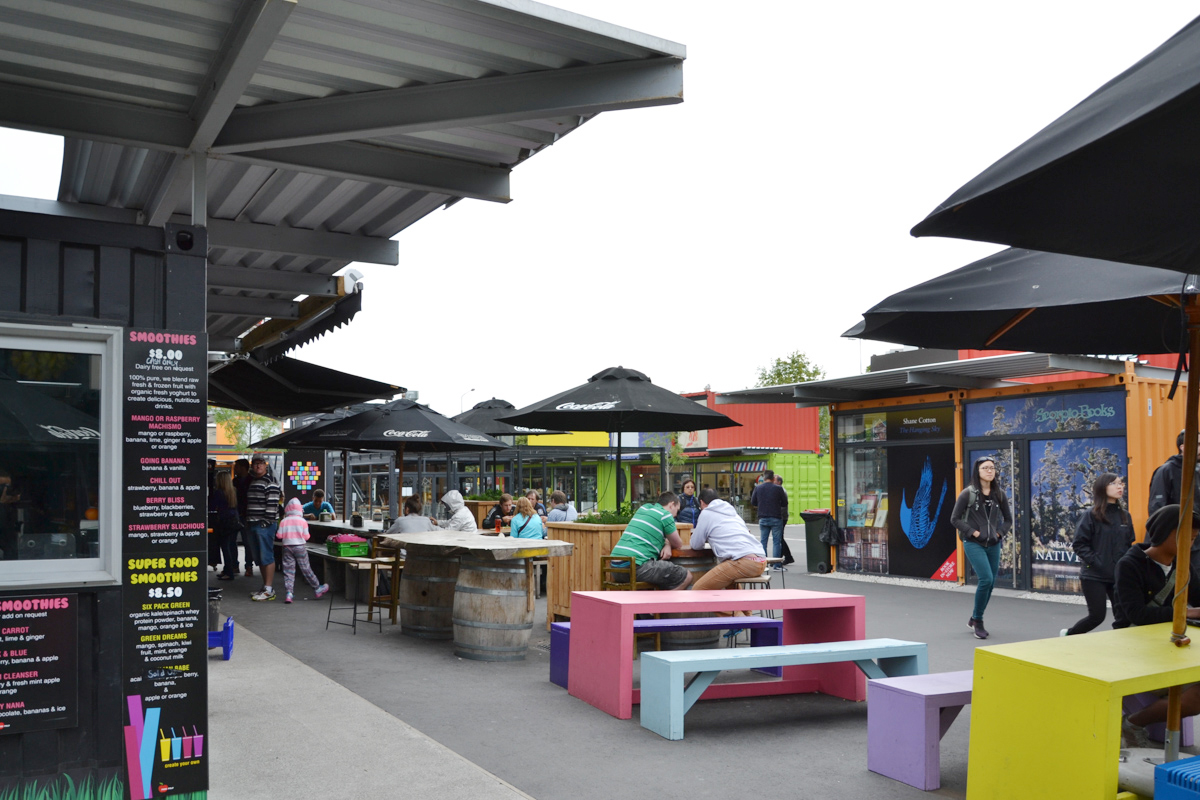
One project is particularly interesting: the St John the Baptist Anglican Church was irreparably damaged by the earthquake. They called Shigeru Ban, the Japanese architect specialized in emergencies. He built (pro bonus) the Cardboard Cathedral. Literally in cardboard: Shigeru Ban is called the architect of disaster, because he builds temporary buildings in emergency situations using cardboard tubes and poor materials.
The entire Cathedral is made by a base of shipping containers and a roof of cardboard tubes, steel beams and polycarbonate cover. A light construction, easy to realize and inexpensive.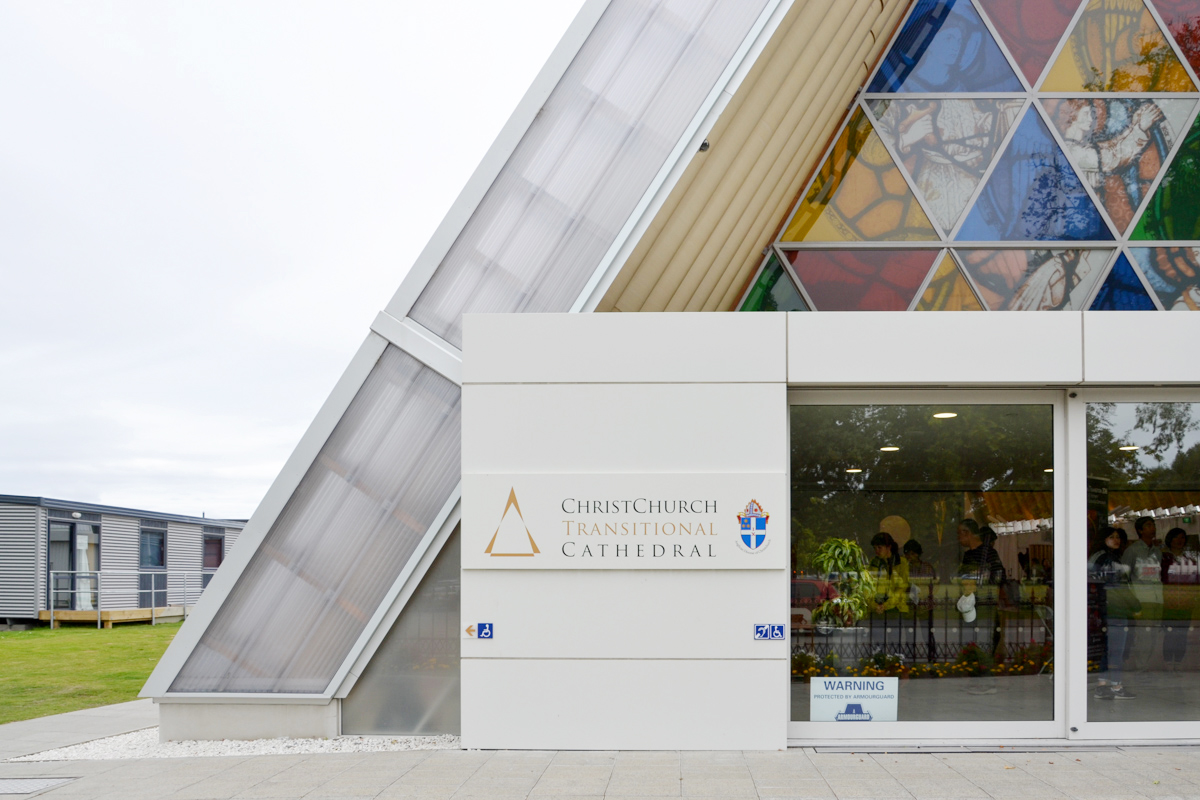
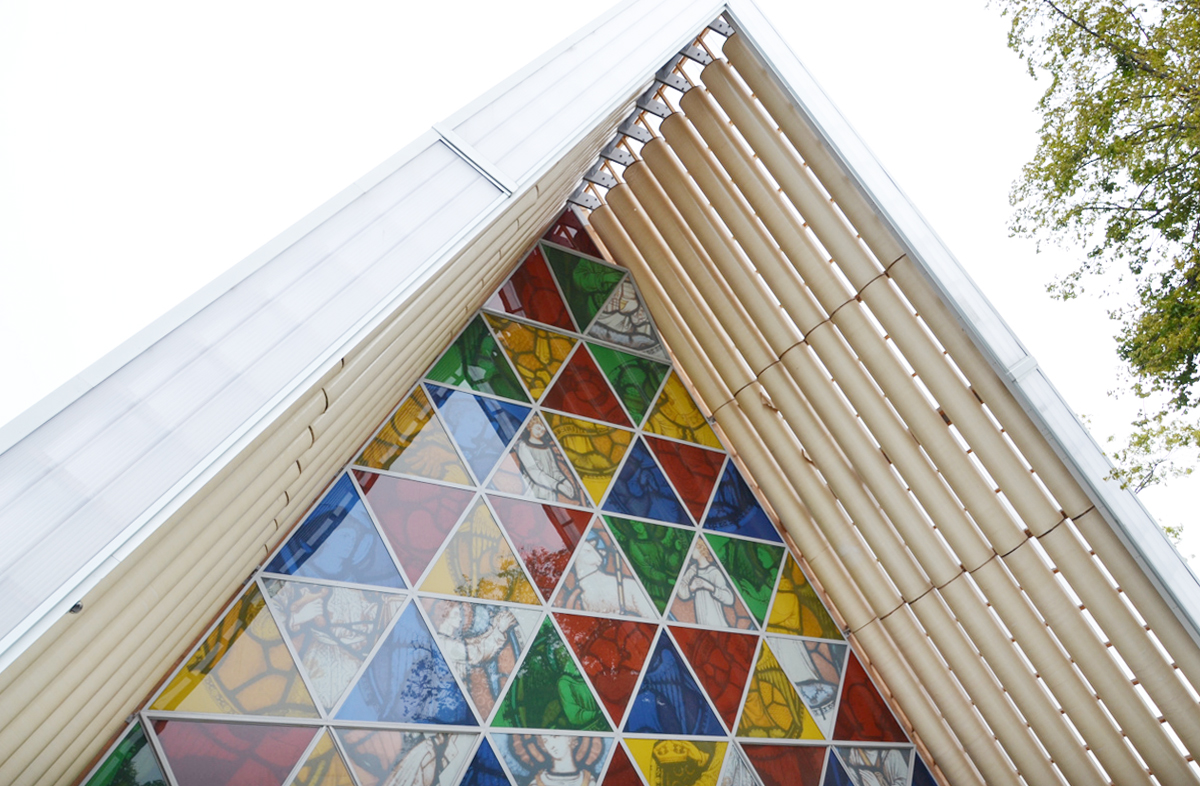

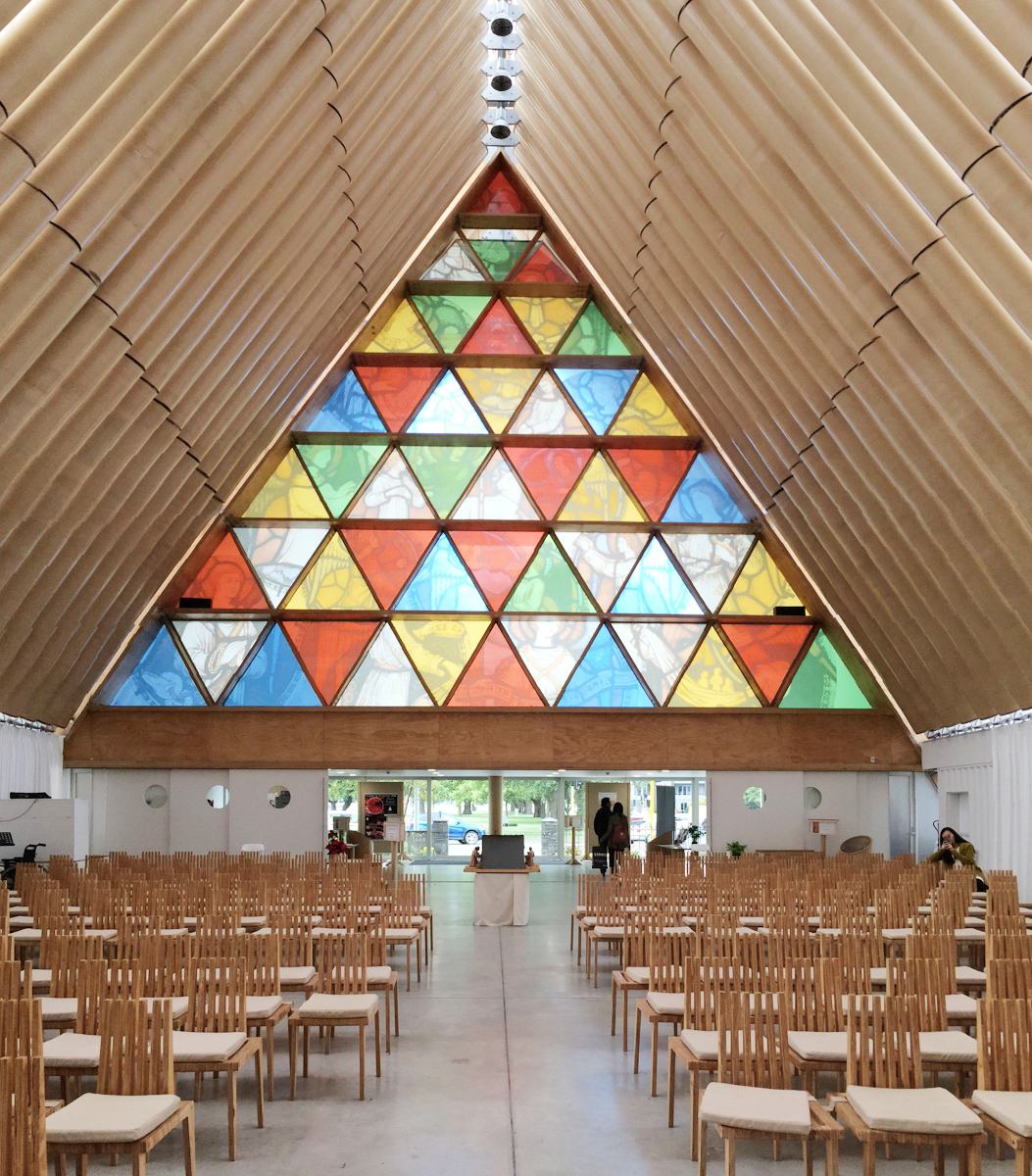
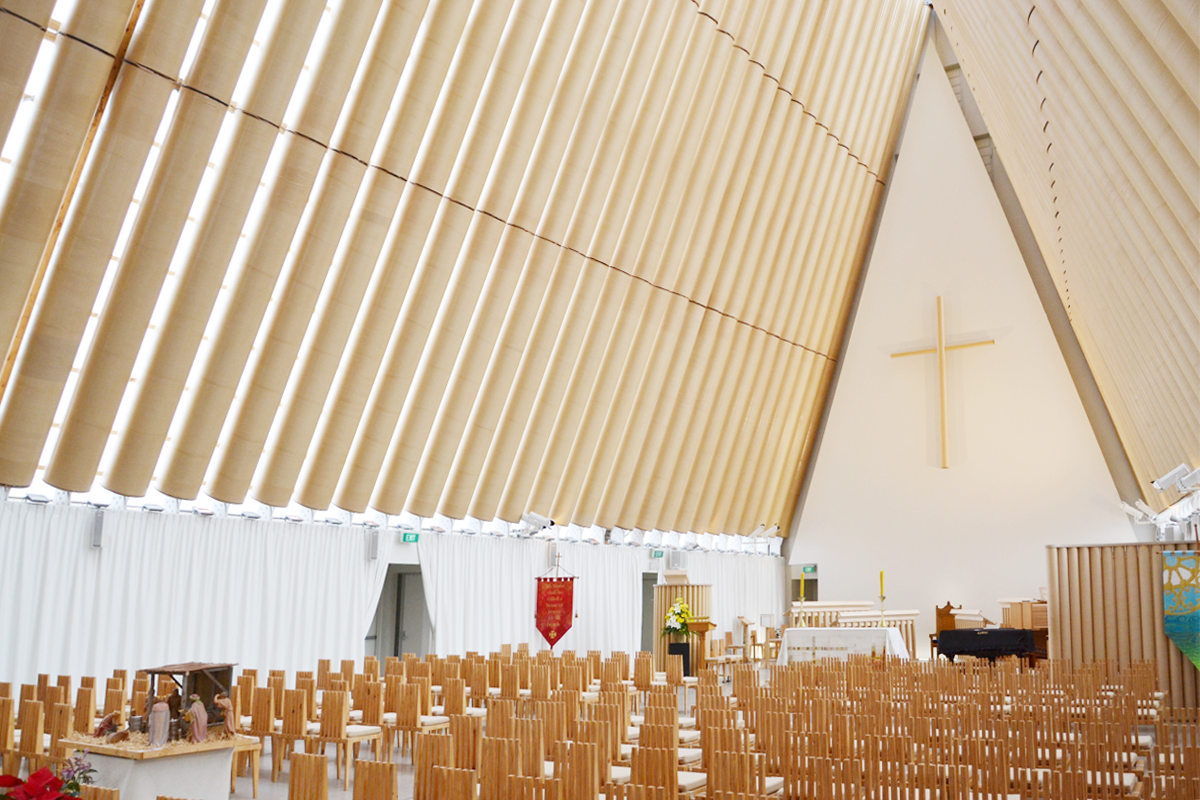
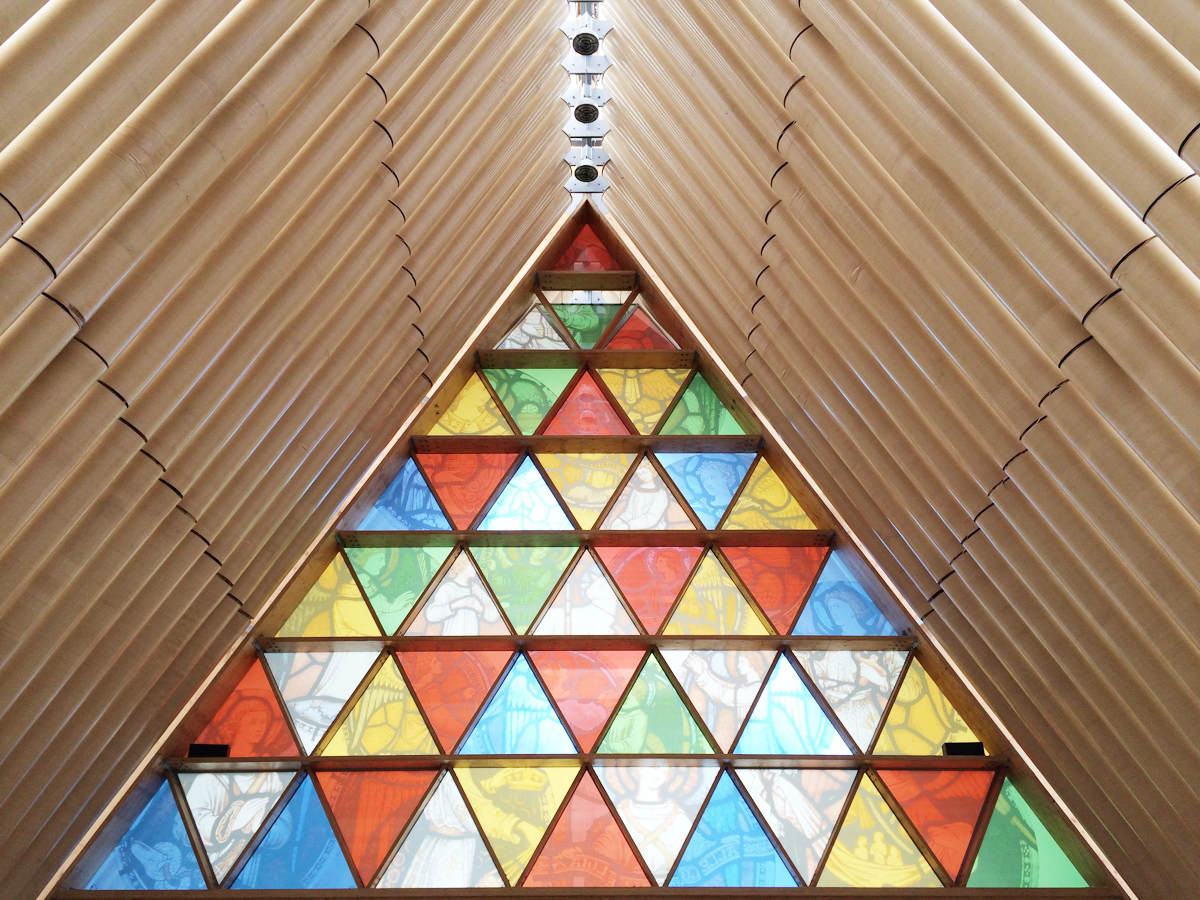
Shigeru Ban is known for his research in the field of tensile structures, especially in their implementation through cheap materials such as cardboard or bamboo. For example, after the Kobe earthquake of 1995, many evacuated people were housed in tents, but Shigeru Ban designed 16 square meters houses, with walls made from cardboard tubes and foundations constituted by beer bottles boxes, filled with sand.
In 2009, after the destruction caused by the earthquake at L’Aquila, Shigeru Ban has presented a futuristic project for the new Conservatorio Alfredo Casella. The project was converted into a concert hall with 230 seats, L’Aquila Temporary Concert Hall, completed and inaugurated in 2011. It has cost € 620,000, mostly covered from Japan State.
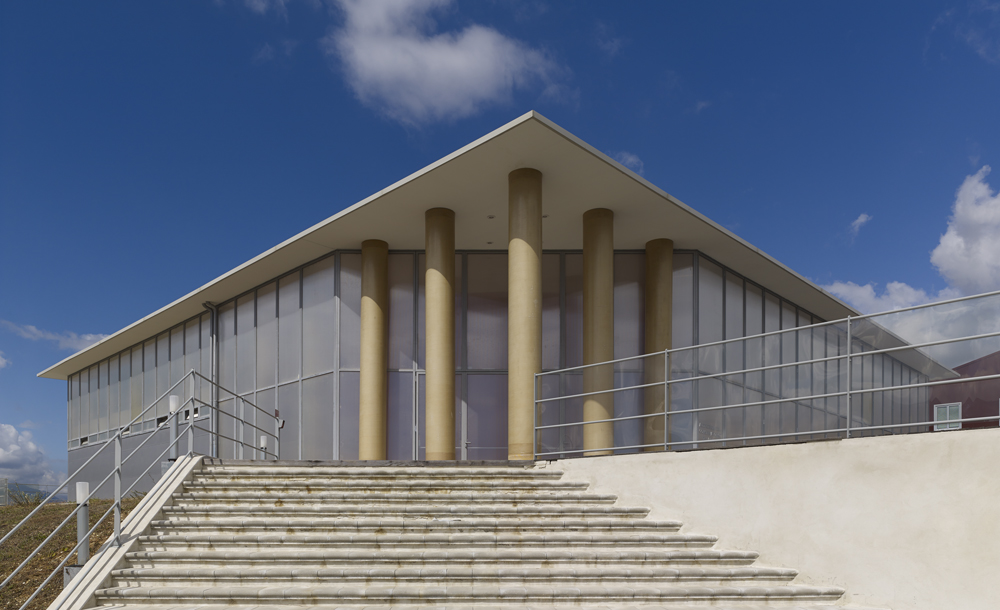
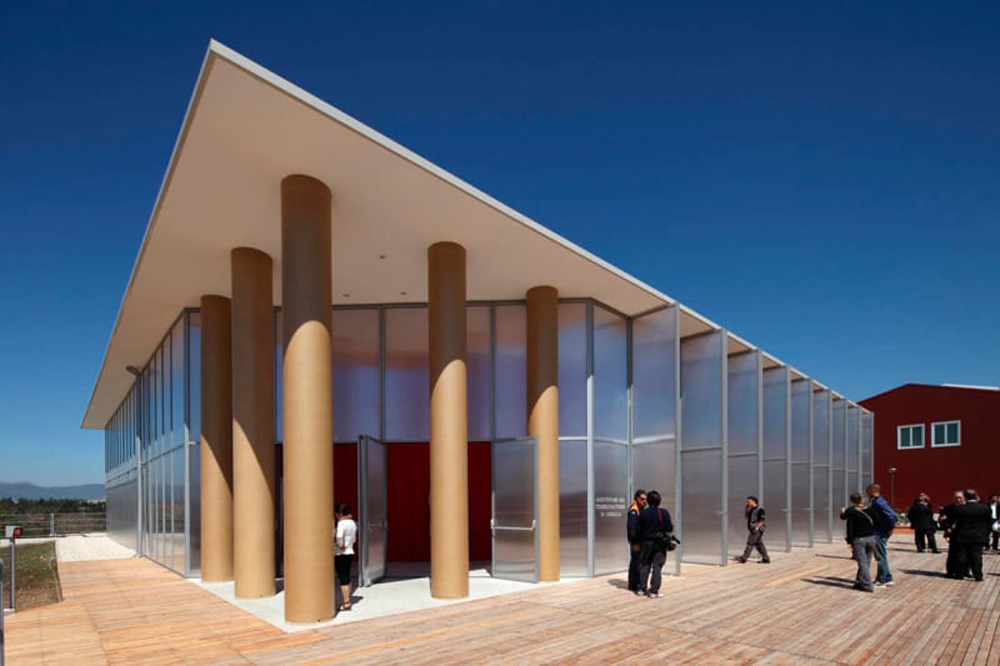
It is very interesting to see how the solidarity and human talent react to dramatic events, it gives hope and confidence to those people who need at this moment to not to be left alone.
Enjoy!

